 x
x

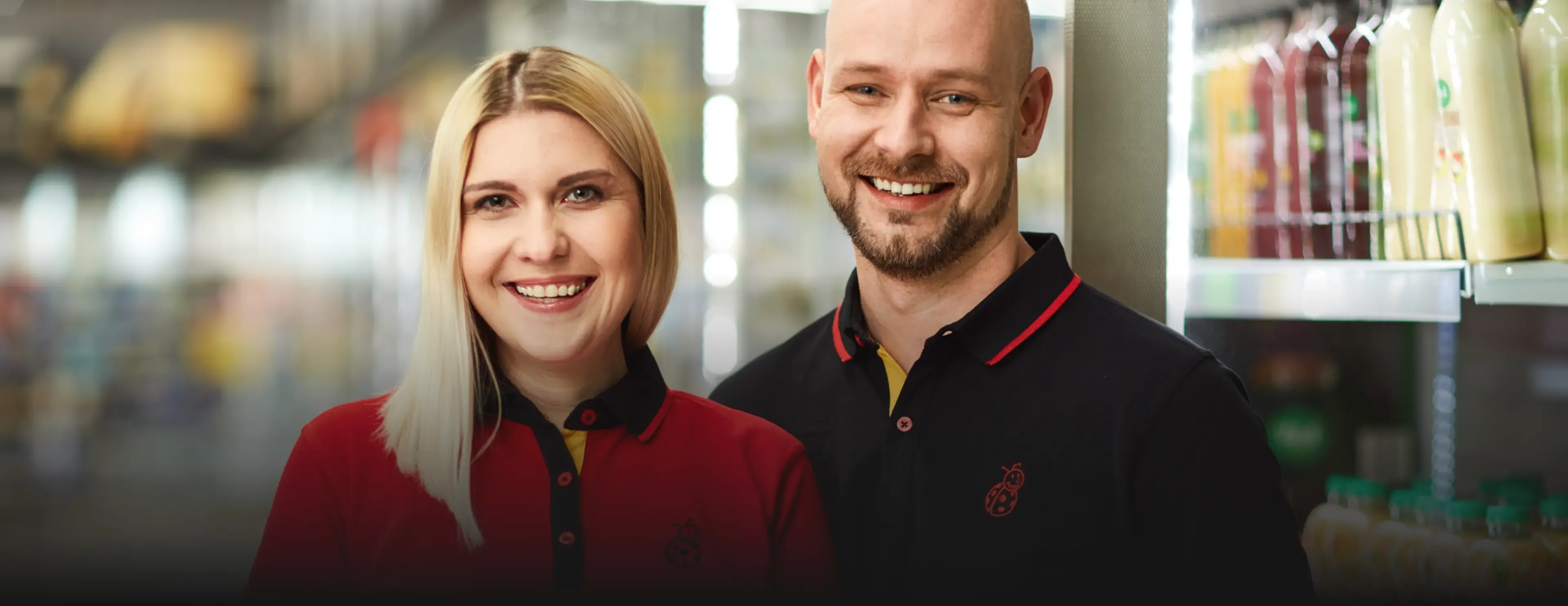
in Poland
of loyalty program
across Poland
traded on Portuguese stock exchange
in Poland
of Biedronka loyalty app
After the first Biedronka app was released, it was met with enthusiasm and interest by millions of Polish consumers. Company decision-makers quickly realized mobile was such a promising direction that it would be sensible to invest in strengthening the infrastructure and rebuilding the software with future scalability and reliability in mind.
Biedronka had already partnered with us for a design overhaul of its app, and when the need to develop a new mobile application from scratch emerged, we were more than happy to do the job.
Our team of developers, analysts, testers, and project managers conducted an in-depth analysis of Biedronka's current infrastructure and required integrations. We formulated business and technical assumptions, selected the appropriate technology stack, generated comprehensive documentation, and meticulously mapped out the project, organizing the tasks into distinct stages.
We also designed a microservices architecture, using an approach that limits the responsibility of every single service. This allows individual components to scale independently, ensuring efficient resource utilization and increasing reliability of the application.
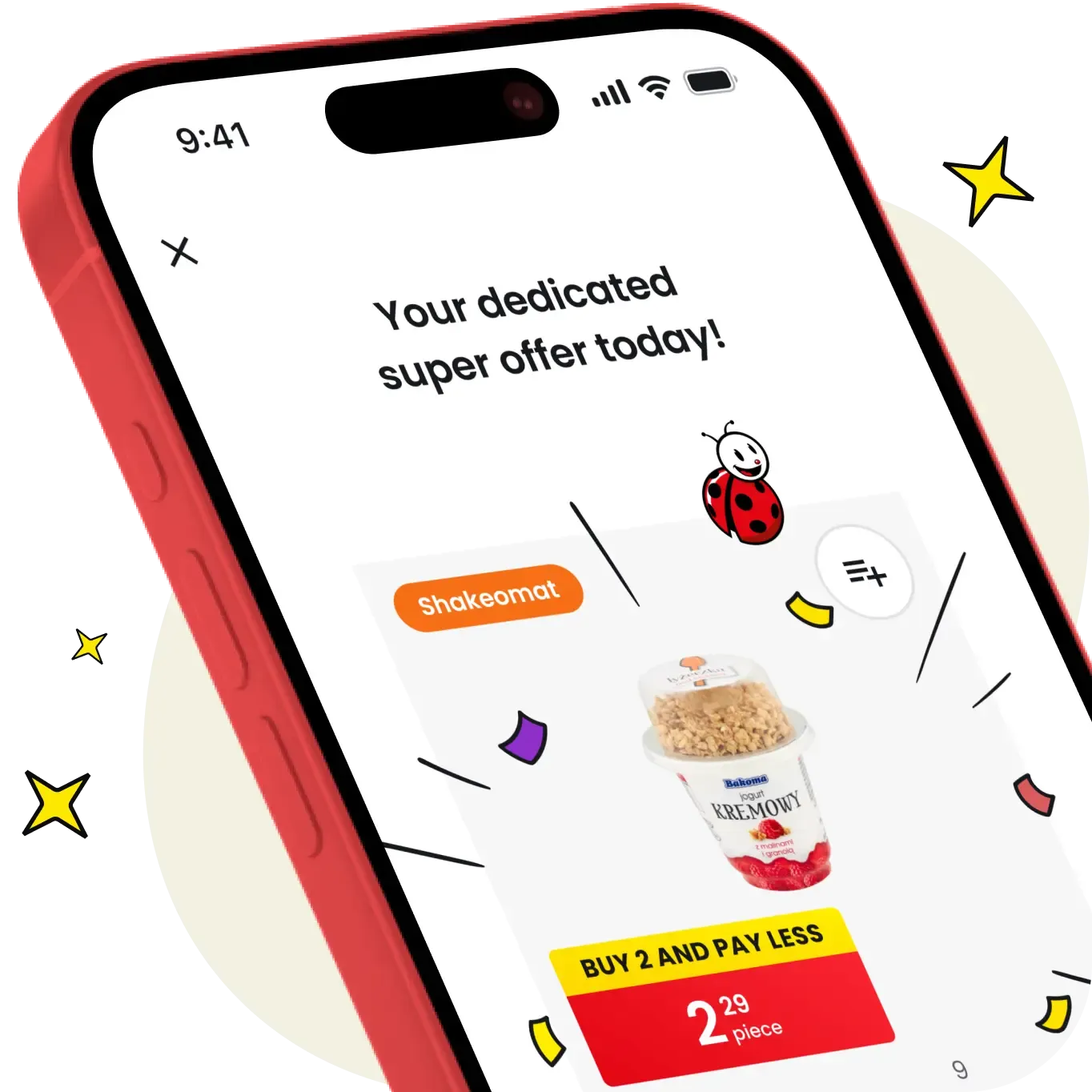
After creating reusable components according to the Design System methodology, our Design team focused on reorganizing the structure of in-app actions to ensure they followed logical patterns across the entire system.
We took care to create simple yet sleek screens that would be understandable at first glance and easy to navigate from users of all ages and backgrounds. Our Designers also invested themselves in making the app fun to use. By incorporating eye-catching skeletons and animations, we gave the application a special flavor that all Biedronka customers would find memorable.
As we worked on the visuals, we didn’t forget about performance. We made sure all animations in the app were built with Lottie, a state-of-the-art solution for creating lightweight, high-quality animations known for small file sizes and ease of rendering.
We used state-of-the-art technology including Kotlin, Jetpack Compose, SwiftUI, and composable architecture to build the Biedronka app for three systems: Android, iOS, and HarmonyOS. For the backend, we worked with Python, Django, and FastAPI.
Over the course of the project, we set up integrations with several internal and external platforms and services, including the Moja Biedronka loyalty program and Forcom’s Recommender, an advanced personalization solution that provides users with individual offers based on their history and preferences.
With the huge popularity of Biedronka in mind, we made provisions to prevent any future performance issues. We performed robust stress tests of the entire infrastructure, simulating higher-than-ever traffic and large numbers of requests in a test environment.
This curious feature allows users to redeem two special deals every day by shaking their smartphones and watching the adorable ladybug from Biedronka’s logo roll around the screen. The idea may not sound overly complicated, but the programming logic behind this functionality is anything but straightforward.
Our developers implemented a solution that processes a multitude of data from the gyroscope with complex mathematical formulas to ensure a realistic effect that truly wows customers and encourages them to keep coming back to the app every day.
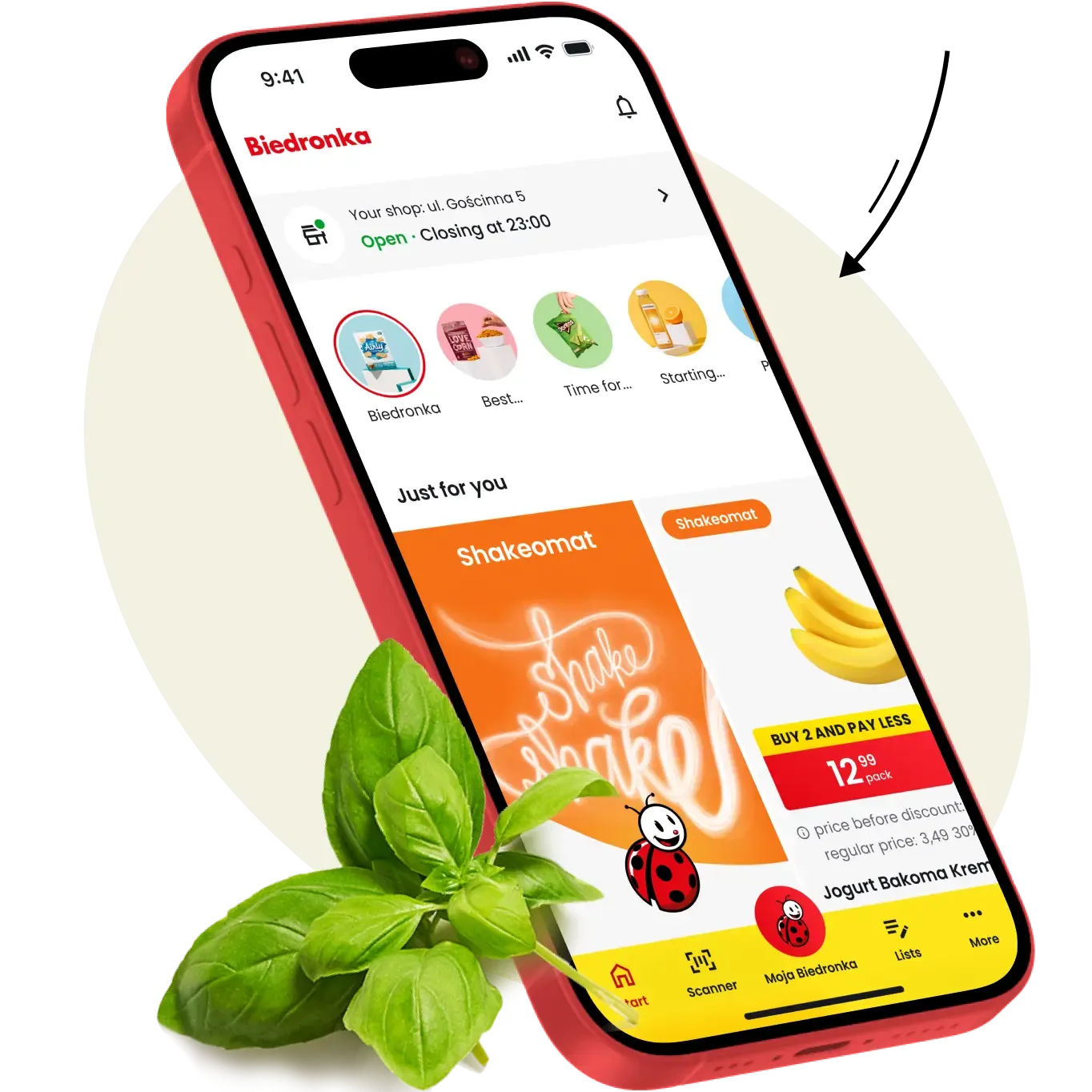
Driven by strong interest in long-term control and cost efficiency, Biedronka preferred to invest in proprietary software rather than use external vendors. The stories feature developed by our engineers encourages users to interact with branded content in a natural manner they know from their favorite social media applications.
Stories are also a great source of additional mobile-driven revenue. They provide all-new display space in a format enjoyed by modern consumers, which Biedronka can offer to supplier brands similarly to shelf space in physical locations.
The integration includes joint accounts that can be shared amongst multiple users. Customers can migrate their physical loyalty card data into the app, or just download it if they had never participated in the program, and use their smartphones to take advantage of special offers only available to members of Moja Biedronka.
Full transaction history is also visible to users, making it easier to track expenses and request support of a store representative in case of problems or complaints.
Customers who want their household’s purchase data to be easily accessible in an aggregated form can invite other users to join a joint account and use a single digital loyalty card. The app supports robust account management settings.
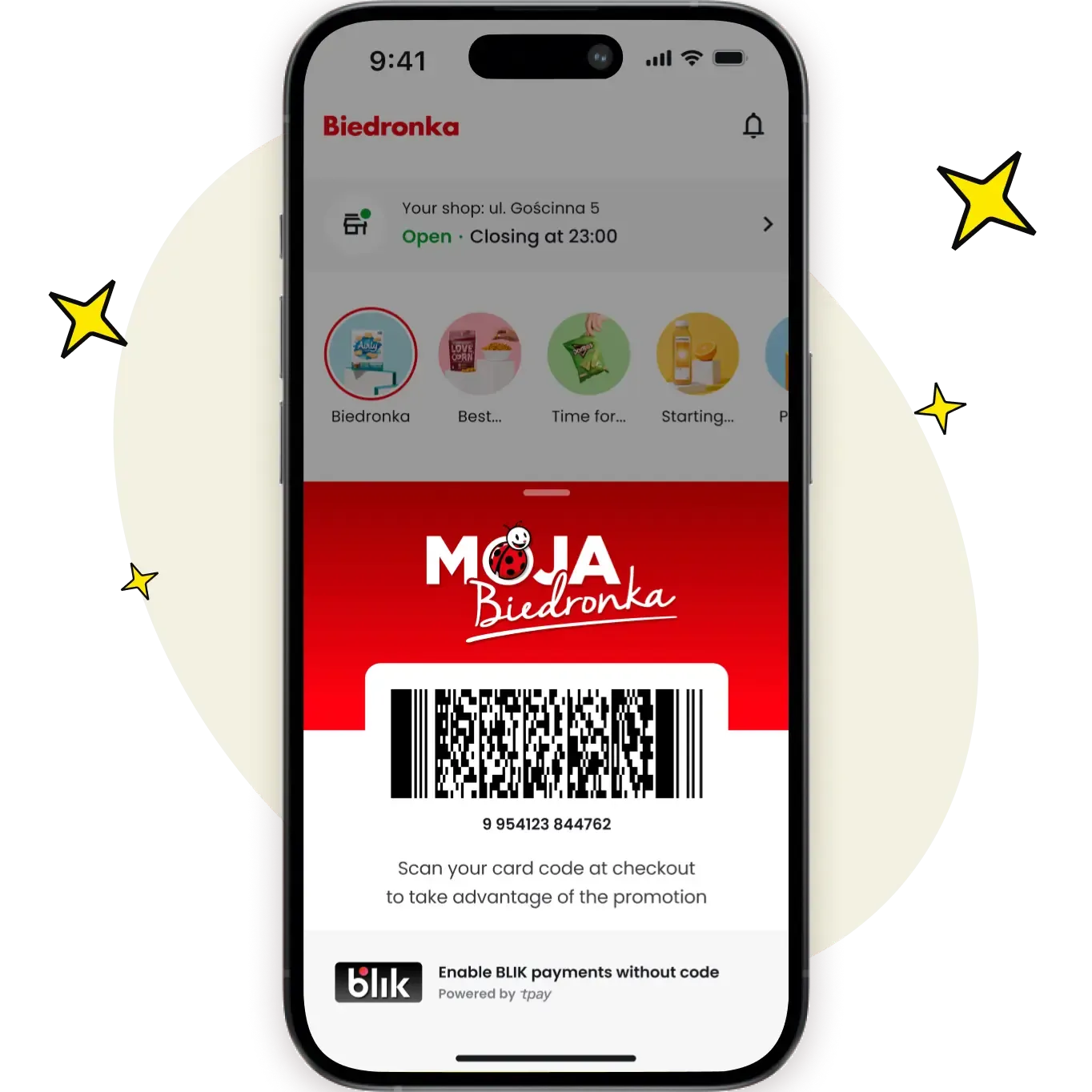
Similarly to the case of the stories feature, Biedronka expressed a preference for in-house development. Basing ourselves on standard, publicly available kits and components to increase efficiency, we built a quick, reliable mobile price lookup solution. Biedronka’s customers can now forget about running around the store to find the nearest barcode scanner on one of the walls. Convenience above all!
The new app makes users’ lives easier at the point of sale as well. Customers who want to pay using BLIK can now do so without having to input the six-digit code generated by their bank’s application into the card terminal. It’s enough to scan their Moja Biedronka loyalty card, and the payment process is instantly simplified so that it’s enough to just confirm the transaction in the banking app.
Less time at the cash register means a faster, better experience at the checkout – not only for the app user, but also everyone in the line behind them.
Releasing an entirely new app to replace the previous one is potentially problematic on several fronts. Firstly, it's about minimizing friction in user experience so that customers don't face any obstacles when trying to access services. Secondly, it can also generate significant costs, for example, if the migration process requires renewed login authorization, which means a need to send millions of text messages for verification purposes.
To design a suitable solution to this problem, our Analysts and Developers had to coordinate the process with Forcom (responsible for data management), Biedronka,
and the vendor who built the previous app. Ultimately, we created a process that established communication between the previous and new app's backend systems as well as IAM and CPS to migrate data on users' login data and authorization status securely and efficiently. This would allow users to be automatically authorized in the new app, making the process less costly to Biedronka and more streamlined from the customers' point of view.
It allows customers to stay on top of their needs without having to resort to other software, making way for a streamlined shopping experience where the Biedronka app covers all the bases.
In the MVP, customers can create and manage multiple lists at the same time, color coding them for added convenience, choosing product from Biedronka’s broad offering, and marking them as already purchased.
However, after the feature’s incredibly warm reception, large-scale enhancements are already on the roadmap and in the works. In the near future, we’re going to add functionalities like sharing lists and collaboration between users, adding products directly from carousels and online leaflets, automatic price calculations, and much more.

Customers can now use their smartphones to access:
Since launch, our maintenance team has been monitoring the infrastructure and ensuring reliable performance. Meanwhile, our engineers and designers are already working on enriching the app with even more exciting features as we speak, and the roadmap will surely be manageable thanks to our focus on scalability and using best practices like design systems and microservices infrastructure.
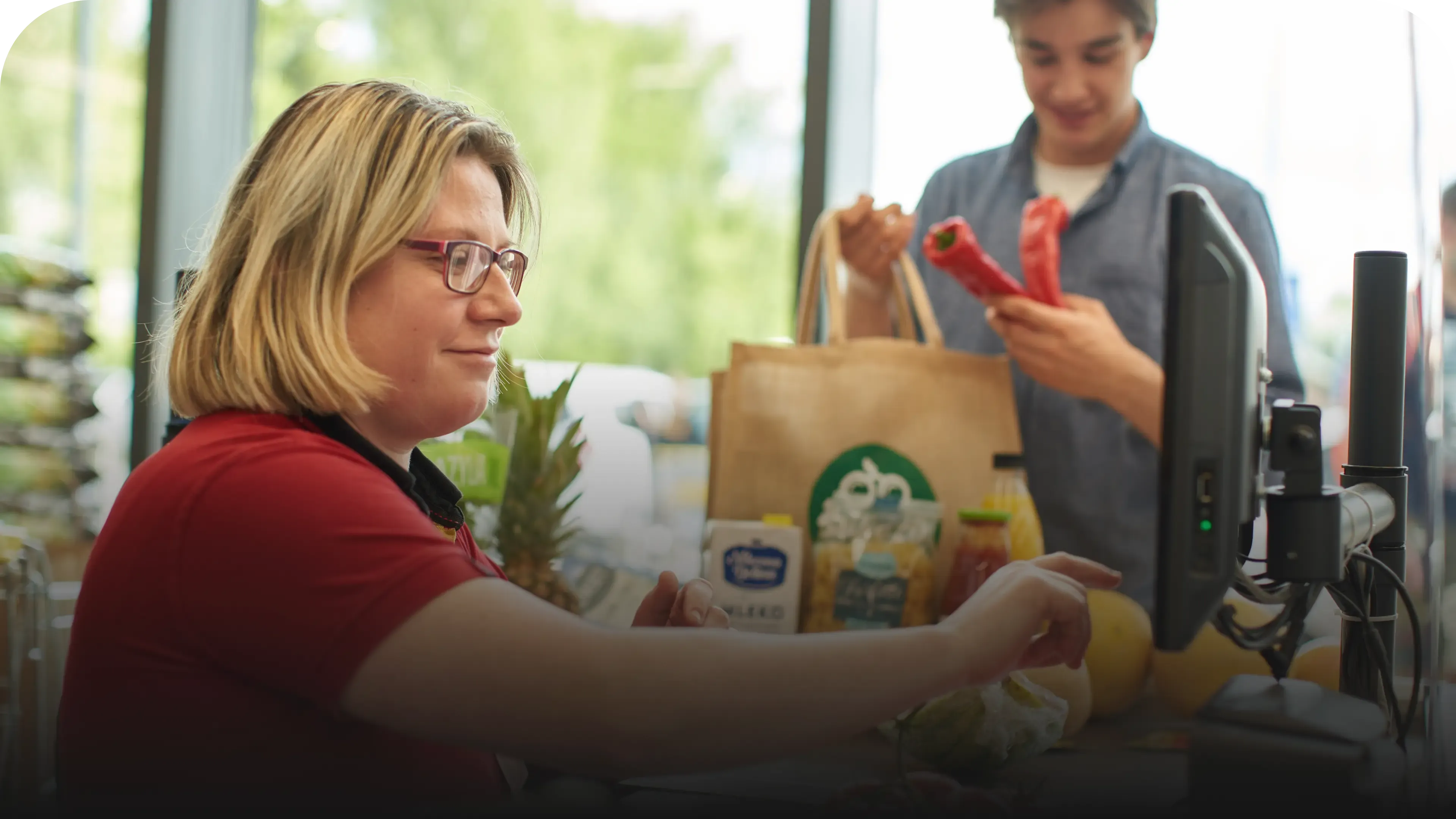

active users

loyalty program members
As an end-to-end solutions team, we partner with Clients to help them understand their customers
All services
